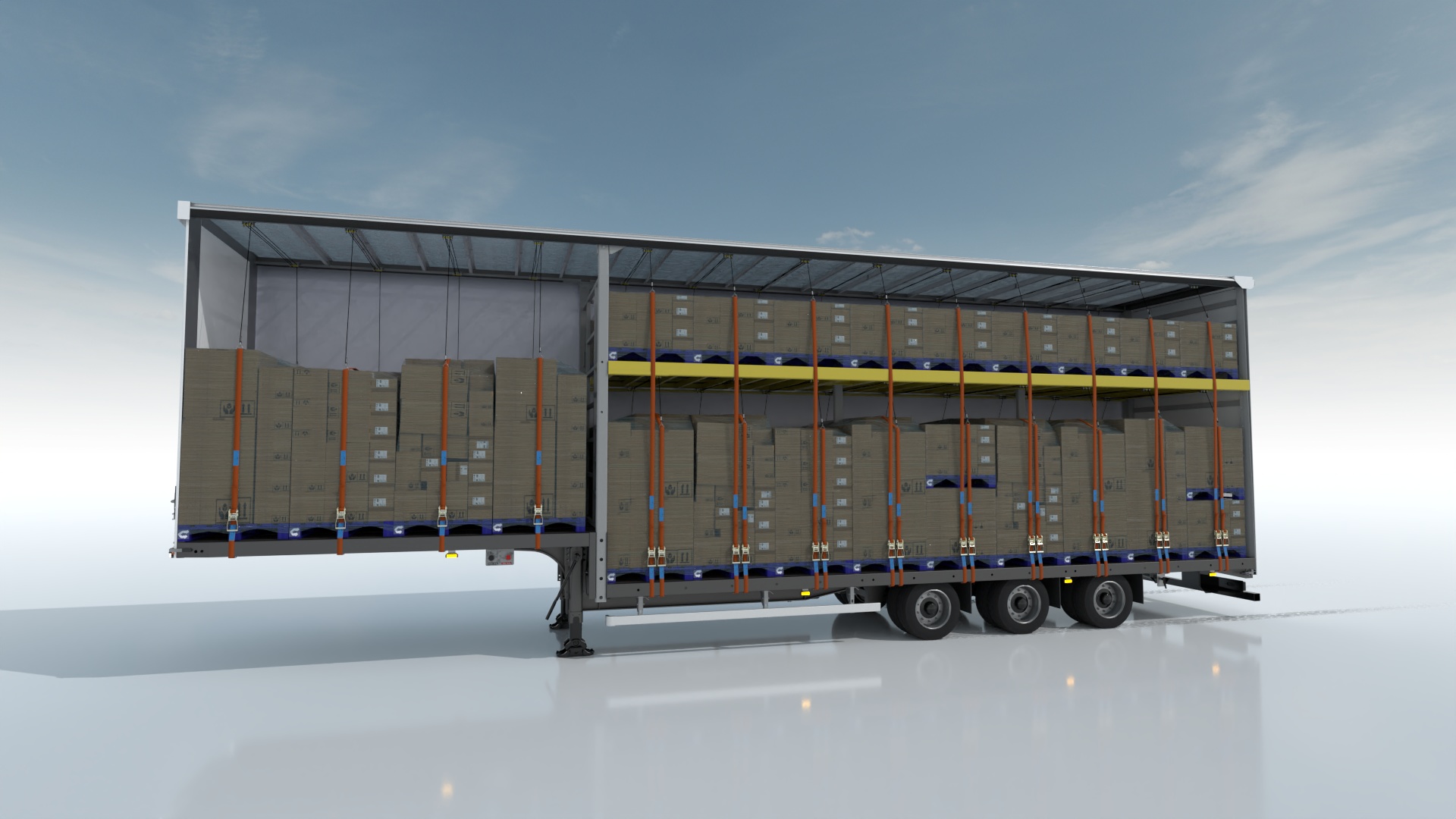The amount of weight you can carry as payload on a trailer in the UK depends on a number of factors which can get confusing.
As a simple process, you should be thinking about the following in order:
- Establish the maximum gross vehicle weight
- Work out the payload potential
- Is the trailer suitable for carrying the payload potential?
- Are the axles being overloaded?
1: GVW or GCW (Gross Vehicle Weight or Gross Combination Weight)
GCW refers to the maximum plated total weight of the tractor, trailer and payload.
The following refers to GCW/GVWs described by the DfT in the UK:
| Axles | Max Combination Weight | Notes |
|---|---|---|
| 6 (3 axle tractor unit with 3 axle trailer) | 44,000 kgs* | See notes (b) and (d) |
| 5 (3 axle tractor unit with 2 axle trailer or 2 axle tractor unit with 3 axle trailer) | 40,000 kgs | See note (a) |
| 4 (2 axle tractor unit with 2 axle trailer) | 36,000 kgs / 38,000 kgs* | |
| 3 (2 axle tractor unit with 1 axle trailer) | 26,000 kgs |
* If the driving axle, if it is not a steering axle, has twin tyres and road friendly suspension, or each driving axle is fitted with twin tyres and the maximum weight for each axle does not exceed 8.55 tonnes
** Distance between the rear axle of the motor vehicle and the front axle of the trailer is not less than 3 metres
(a) 5 axles or more artic and the 5 axles or more drawbar could alternatively have a 3 axle motor vehicle and a 2 axle trailer
(b) Conditions: - each vehicle must have at least 3 axles. - drive axle has twin tyre and road friendly suspension and maximum of 10.5 tonnes, or each driving axle is fitted with twin tyres and has a maximum of 8.5 tonnes - trailer has road friendly suspension
(c) Conditions for operation on 5 axles: - must have 3 axles on tractor unit - single container 40ft in length conforming to standards laid down by the International Standards Organisation being carried only - vehicle being used for international journey
(d) Powered by a low pollution engine (being at least Euro 2).
EU
The weight limits in the EU are very similar with the exception that there is a 40,000kgs capped GVW limit.
ZEVs
It is possible to have a battery electric truck (ZEV) plated or re-plated by the DVSA so that the GCW is increased by 2,000kgs; provided that the GCW does not exceed 44,000 kgs.
As an example, a deisel powered 40T combination could be re-plated to 42T if the truck is a ZEV. Equally, a 38T combination could be re-plated to 40T if the truck was a ZEV.
The weight of a ZEV compared to a diesel equivalent is irrelevant. If a ZEV weighs more than its diesel equivalent + 2,000kgs, then your payload potential will be reduced accordingly.
GVW and "O" Licence Registration
As operators are required to register what GVW they want an artic combination to run at (and pay the relevant licence fee), it is possible to downrate this limit so it's important to understand what is covered on your "O" licence. For instance, a 3 axle tractor unit with 3 axle trailer could be rated at 44 tonnes max, but it could be registered on the "O" licence at just 38 tonnes for instance to reduce the licence fee.
2: Working Out Your Payload Potential
Once you understand your maximum GVW, the next thing to consider is the unladen weight of both your tractor and trailer (TARE weight).
Examples:
44 tonne GVW: A 3 axle diesel tractor unit may weigh circa 8,500kgs coupled with an example tri-axle trailer weighing 7,500kgs. This would total 16,000kgs. Your maximum potential payload can then be calculated as the maximum GVW less 16,000kgs. The payload potential would therefore be 28,000kgs.
40 tonne GVW: A 2 axle diesel tractor unit may weigh circa 7,500kgs coupled with an example tri-axle trailer weighing 7,500kgs. This would total 15,000kgs. Your maximum potential payload can then be calculated as the maximum GVW less 15,000kgs. The payload potential would therefore be 25,000kgs.
26 tonne GVW: An urban 2 axle diesel tractor unit may weigh circa 5,500kgs coupled with an example single-axle trailer weighing 5,000kgs. This would total 10,500kgs. Your maximum potential payload can then be calculated as the maximum GVW less 10,500kgs. The payload potential would therefore be 15,000kgs.
3: Gross Trailer Weight
Of course, all this assumes that the trailer itself is designed to carry your payload potential. Not all trailers are designed the same and each manufacturer will state a Gross Trailer Weight. This is the maximum weight the trailer is designed to be operated at (including payload). For instance, if the Gross Trailer Weight is 30,000kgs and the trailer TARE weight is 10,000kgs, then you have an additional payload restriction of 20,000kgs max.
4: Axle Overloading
Finally, once you understand your maximum payload potential, the last thing to consider is whether that payload might overload the trailer axle set (or bogie). Although each axle may have a manufacturer weight rating, each trailer bogie has a maximum load limit as follows:
| Axle # | Max Bogie Load |
|---|---|
| 1 | 10,000 kgs |
| 2 | 18,000 kgs |
| 3 | 24,000 kgs |
Depending on your load distribution, the load on the axles may vary and it is important to understand what weight is being imposed on the trailer bogie. This can be done on a weigh bridge for accuracy. You can also estimate this by using a tool, such as the one in the related links section below.
We’d love to hear from you – get in touch today!




